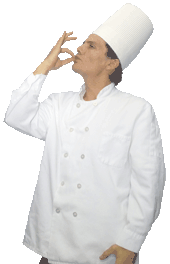At WiseGEEK, we're committed to delivering accurate, trustworthy information. Our expert-authored content is rigorously fact-checked and sourced from credible authorities. Discover how we uphold the highest standards in providing you with reliable knowledge.
What Are the Different Types of Platter Stands?
There are many different types of platter stands. The variations depend on size and style and fall into three groups: single, tiered, and inline. Platter stands are sold at a wide range of prices, depending on the style and brand, and whether it is professional grade or intended for personal use.
In some cases, platter stands come in a set with the platter, especially if the platter is an odd shape. Professional grade platter stands are usually more expensive than decorative, personal use platter stands. This is because professional grade stands will be used much more often and have to be made from sturdier materials.

A single stand is designed to hold one platter. In some cases, these can accommodate platters of many different shapes. Specialty shapes, like an oblong bowl or a "canoe" design, which has tapered bottom, require a specially designed stand. Single platters have a pedestal or legs.
The tiered stand comes in a wide variety of styles. Some are like traditional cake tier stands with gradient platters, starting with the largest on the bottom and the smallest on top. Others are designed to accommodate two or more platters of the same size, stacked vertically. Another design uses arms to support platters at different heights, arranged in an asymmetric pattern. These create a good deal of visual interest but are typically only used with small to medium platters.
Inline stands support two or more platters of the same size platter. Like single stands, inline stands may have a universal design that is intended for use with a variety of platter shapes and sizes, or they may be designed for a specific type of platter. Typically, inline platter stands have legs instead of a pedestal for support.
Most stands are made from metal alloys, but some plastic, glass, and wooden stands are available. The metal stands are much more durable. Professional caterers and others in the food service industry typically use metal stands. Glass and wooden stands are more suited for home use.
Stands come in a variety of styles and finishes. Virtually any aesthetic, from traditional and formal to casual and contemporary, can be created with the stand. In some cases, platter stands are not decorative but are made to blend in. For instance, if a caterer is using fabric to create the backdrop for the serving table, visual interest can be created by covering multiple platter stands of different heights with additional fabric. The design of the stand itself, in this case, is irrelevant.
AS FEATURED ON:
AS FEATURED ON:










Discuss this Article
Post your comments